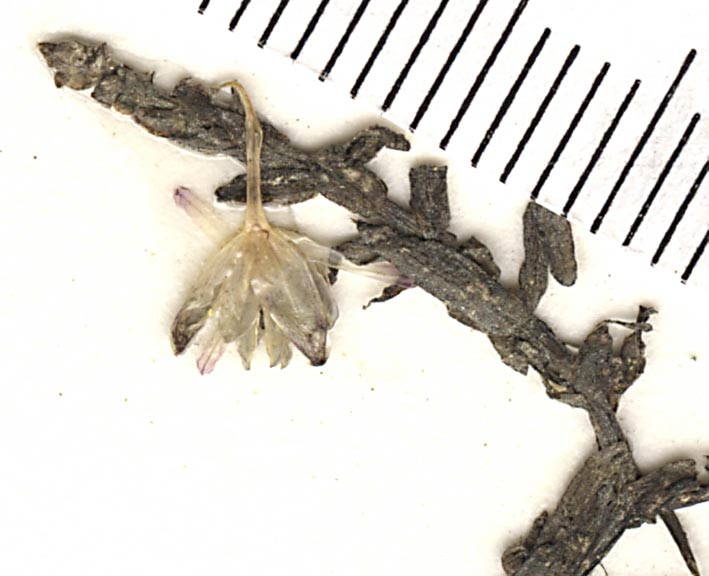Elodea
|
Family: Hydrocharitaceae |
Plants perennial, of fresh waters. Rhizomes and stolons absent. Erect stems rooted in substrate, branched or unbranched, elongate. Leaves cauline, whorled, 3--7 at each node, or leaves opposite at 4+ proximalmost nodes, submersed, sessile; blade linear to linear-lanceolate, apex acute; midvein without lacunae along side(s), blade uniform in color throughout;; abaxial surfacely without prickles or aerenchyma; intravaginal squamules entire. Inflorescences solitary, sessile; spathes not winged. Flowers unisexual, staminate and pistillate on different plants, or rarely bisexual, usually projected to surface of water by elongate floral tube base, sessile; petals white. Staminate flowers: filaments distinct or 3 inner connate ½ their length; anthers oval; pollen in monads or tetrads. Pistillate flowers: ovary 1-locular; styles 3, not 2-fid. Fruits ovoid to lance-ellipsoid, smooth, dehiscing irregularly. Seeds cylindric to fusiform, glabrous to hirsute. An additional name, Elodea schweinitzii (G. Planchon) Caspary, has appeared in North American literature. Although it was accepted by some (H. St. John 1965), others stated, 'Elodea schweinitzii is something of a taxonomist's nightmare' (C. D. K. Cook and K. Urmi-König 1985). The few collections referable to the name are exceedingly variable, so variable in fact that the authors added, 'the main character is variability itself.' I am following Cook and Urmi-König in not accepting the taxon.
Fls unisexual (and the plants dioecious) or seldom perfect, borne singly in submersed, sessile or subsessile, axillary, bidentate or bifid spathes, elevated to the surface of the water on a long, slender, pedicel-like hypanthium (or the staminate fls sessile, breaking loose, and floating); fls ephemeral and delicate; pet white or purple, not much (if at all) longer than the sep, or wanting; no nectaries; staminate fls with typically 9 stamens, an outer cycle of 6 distinct, an inner cycle of 3 with the filaments evidently connate below, the filaments shorter than the explosively dehiscent, eventually explanate anthers; pollen floating; pistillate fls with 3 staminodia, and an elongate style with 3 slender, simple or often bifid stigmas; ovules few, parietal or nearly basal; fr capsular; submersed aquatic perennials, rooted to the bottom or free-drifting when broken loose; stems simple or sparsely branched; lvs all cauline, sessile, slender, minutely and sharply serrulate, 1-nerved, at least the middle and upper opposite or whorled; stipules minute, evanescent. (Anacharis, Philotria) 5, New World. E. schweinitzii (Planch.) Casp., with perfect fls and 3 stamens, originally native apparently to s. N.Y. and e. Pa., has not been recollected since 1832 and is apparently extinct. It may reflect hybridization between E. canadensis and E. nuttallii. Gleason, Henry A. & Cronquist, Arthur J. 1991. Manual of vascular plants of northeastern United States and adjacent Canada. lxxv + 910 pp. ©The New York Botanical Garden. All rights reserved. Used by permission. |

